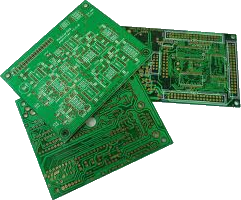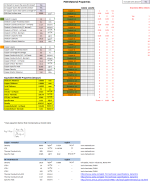PCB Equivalent Conductivity

Description
Calculation of equivalent PCB thermal conductivity properties based on copper layers and copper coverage.
Calculation Reference
PCB Design
Electronic Circuits
Printed Circuit Board Design
The equivalent thermal conductivity of a Printed Circuit Board (PCB) is an important parameter to consider when designing PCBs for thermal management, as it directly affects the temperature distribution and heat dissipation across the board.
The equivalent thermal conductivity of a PCB can be calculated based on the following properties:
-
Thermal conductivity of the dielectric material (usually FR-4): Typically, the thermal conductivity of FR-4 is in the range of 0.2 to 0.5 W/mK.
-
Thermal conductivity of copper: The thermal conductivity of copper is approximately 400 W/mK.
-
Copper layer thickness: The thickness of copper layers in the PCB, usually measured in ounces per square foot (oz/ft^2) or micrometers (µm).
-
Copper coverage: The percentage of the PCB surface area covered by copper.
To estimate the equivalent thermal conductivity of a PCB, you can use the following formula:
keq = (k_cu * A_cu + k_dielectric * A_dielectric) / A_total
where:
- keq is the equivalent thermal conductivity of the PCB
- k_cu is the thermal conductivity of copper
- A_cu is the surface area of the copper
- k_dielectric is the thermal conductivity of the dielectric material (e.g., FR-4)
- A_dielectric is the surface area of the dielectric material
- A_total is the total surface area of the PCB
To calculate A_cu and A_dielectric, you can use the copper coverage percentage:
A_cu = A_total * (copper_coverage / 100) A_dielectric = A_total - A_cu
By applying this formula, you can estimate the equivalent thermal conductivity of a PCB based on the copper layers and copper coverage. Note that this is a simplified approach, and more accurate results can be obtained using numerical methods, such as finite element analysis (FEA), or specialized thermal simulation software.
Calculation Preview
Full download access to any calculation is available to users with a paid or awarded subscription (XLC Pro).
Subscriptions are free to contributors to the site, alternatively they can be purchased.
Click here for information on subscriptions.


